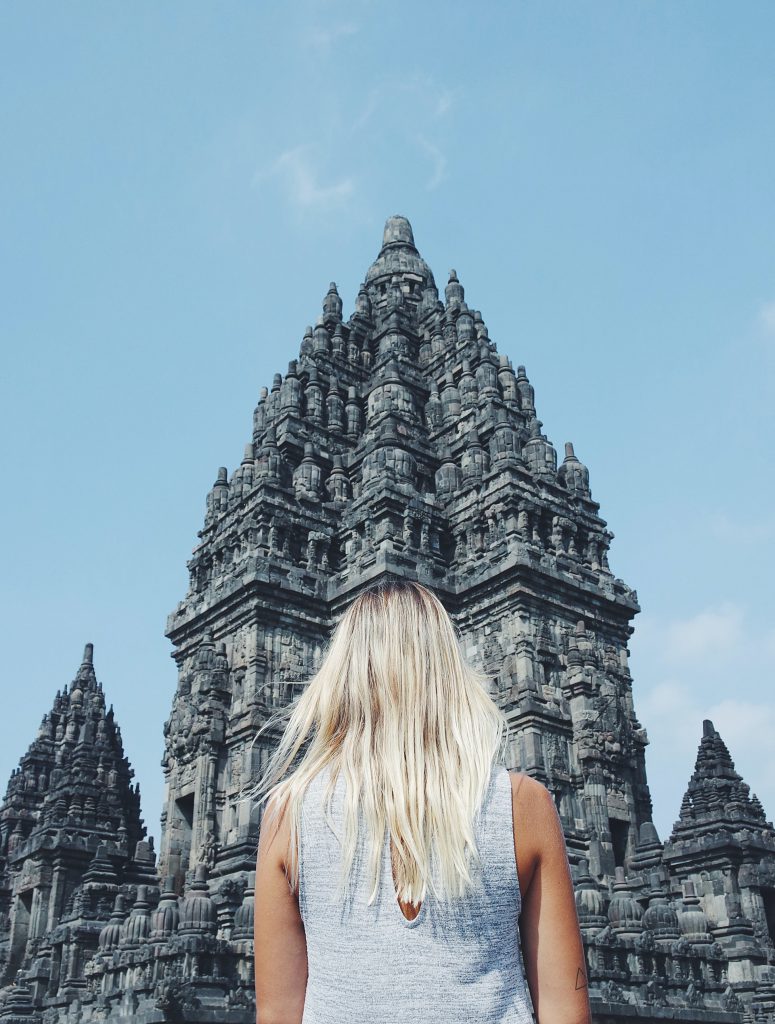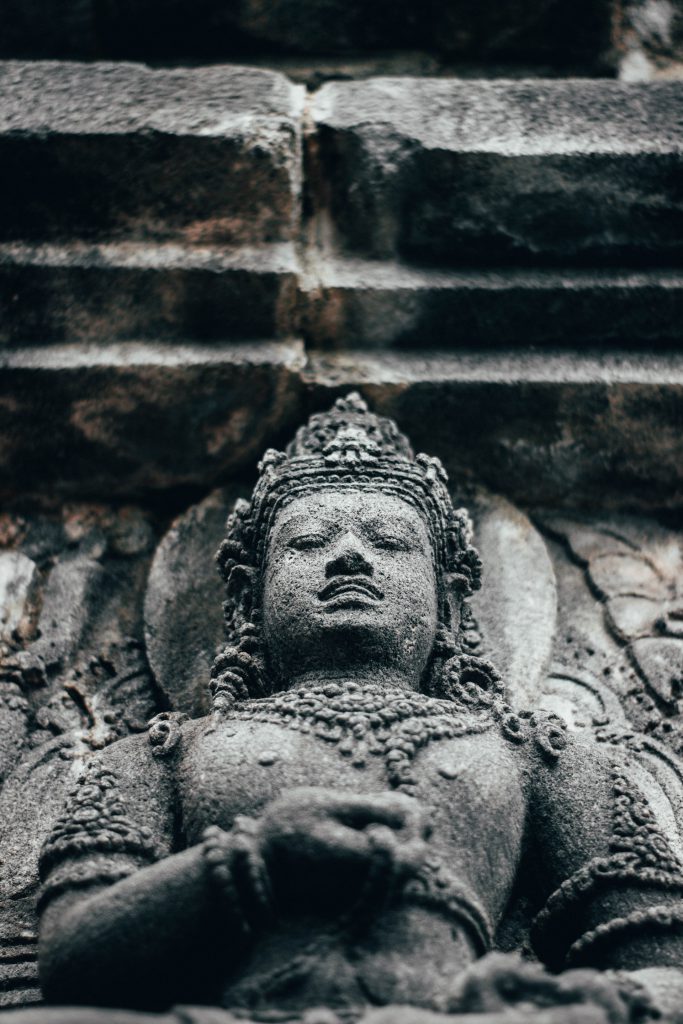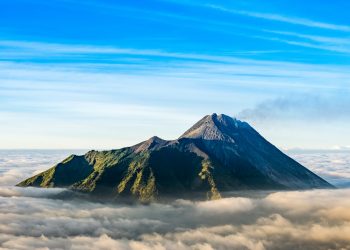Prambanan temple is a 9th-century Hindu temple compound in Special Region of Yogyakarta, Indonesia, dedicated to the Trimūrti, the expression of God as the Creator (Brahma), the Preserver (Vishnu) and the Transformer (Shiva). The temple compound is located approximately 17 kilometres (11 mi) northeast of the city of Yogyakarta on the boundary between Central Java and Yogyakarta provinces.
The temple compound, a UNESCO World Heritage Site, is the largest Hindu temple site in Indonesia and the second-largest in Southeast Asia. It is characterized by its tall and pointed architecture, typical of Hindu architecture, and by the towering 47-metre-high (154 ft) central building inside a large complex of individual temples. Prambanan attracts many visitors from around the world.

Originally there were a total of 240 temples standing in Prambanan. The Prambanan Temple Compound consist of:
- 3 Trimurti temples: three main temples dedicated to Vishnu, Shiva and Brahma
- 3 Vahana temples: three temples in front of Trimurti temples dedicated to the vahana of each gods; Garuda, Nandi and Hamsa
- 2 Apit temples: two temples located between the rows of Trimurti and Vahana temples on north and south side
- 4 Kelir temples: four small shrines located on 4 cardinal directions right beyond the 4 main gates of inner zone
- 4 Patok temples: four small shrines located on 4 corners of inner zone
- 224 Pervara temples: hundreds of temples arranged in 4 concentric square rows; numbers of temples from inner row to outer row are: 44, 52, 60, and 68

The Prambanan compound also known as Rara Jonggrang complex, named after the popular legend of Rara Jonggrang. There were once 240 temples standing in this Shivaite temple complex, either big or small.[17] Today, all of 8 main temples and 8 small shrines in the inner zone are reconstructed, but only 3 out of the original 224 pervara temples are renovated. The majority of them have deteriorated; what is left are only scattered stones. The Prambanan temple complex consists of three zones; first the outer zone, second the middle zone that contains hundreds of small temples, and third the holiest inner zone that contains eight main temples and eight small shrines.
An architectural model of the Prambanan temple complex; originally there were 240 temples in this temple compound
The Hindu temple complex at Prambanan is based on a square plan that contains a total of three zone yards, each of which is surrounded by four walls pierced by four large gates. The outer zone is a large space marked by a rectangular wall. The outermost walled perimeter, which originally measured about 390 metres per side, was oriented in the northeast-southwest direction. However, except for its southern gate, not much else of this enclosure has survived down to the present. The original function is unknown; possibilities are that it was a sacred park, or priests’ boarding school (ashram). The supporting buildings for the temple complex were made from organic material; as a consequence no remains occur.
The popular legend of Rara Jonggrang is what connects the site of the Ratu Boko Palace, the origin of the Durga statue in the northern cell/chamber of the main shrine, and the origin of the Sewu temple complex nearby. The legend tells the story about Prince Bandung Bondowoso, who fell in love with Princess Rara Jonggrang, the daughter of King Boko. But the princess rejected his proposal of marriage because Bandung Bondowoso had killed King Boko and ruled her kingdom. Bandung Bondowoso insisted on the union, and finally Rara Jonggrang was forced to agree to a union in marriage, but she posed one impossible condition: Bandung must build her a thousand temples in only one night.

The Prince entered into meditation and conjured up a multitude of supernatural beings from the earth. Helped by these spirits, he succeeded in building 999 temples. When the prince was about to complete the condition, the princess woke her palace maids and ordered the women of the village to begin pounding rice and set a fire in the east of the temple, attempting to make the prince and the spirits believe that the sun was about to rise. As the cocks began to crow, fooled by the light and the sounds of daybreak, the supernatural helpers fled back into the ground. The prince was furious about the trick and in revenge he cursed Rara Jonggrang, turning her to stone. She became the last and the most beautiful of the thousand statues. According to the traditions, the unfinished thousandth temple created by the demons become the Sewu temple compounds nearby (Sewu means “thousands” in Javanese), and the Princess is the image of Durga in the north cell of the Shiva temple at Prambanan, which is still known as Rara Jonggrang or “Slender Maiden”.









































